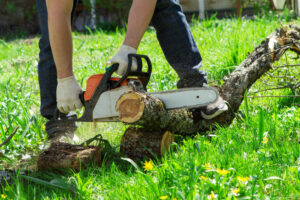Mature trees, with their towering presence and graceful branches, are the crown jewels of any landscape. These giants of nature not only beautify our surroundings but also provide invaluable benefits to the environment and our well-being. To ensure your mature trees stand tall and thrive for generations to come, follow these essential steps for their care and protection.
Know Your Trees Inside Out
Understanding the specific needs of your trees is the first step in maintaining their health. Begin by identifying the tree species in your yard using resources like the Arbor Day Foundation’s online dichotomous key. Learn about their water requirements, preferred soil conditions, and sensitivities.
Drought tolerance varies among trees, so keep a close eye on them during dry spells and provide supplemental water as needed. Additionally, be aware of factors such as high winds, salt spray, drought, overwatering, or root competition from other plants that may stress your trees.
Shield the Root Zone
Healthy roots are the foundation of a healthy tree, and soil quality plays a pivotal role. Tree roots need oxygen to absorb nutrients, which is why well-aerated soil is essential. Compacted soil, a common threat to roots, restricts water penetration and oxygen flow.
Focus on protecting the soil and roots within the tree’s critical root zone (CRZ), which corresponds to the tree’s drip line. Avoid compacting the soil or altering the soil grade within this zone, as it can cause significant damage to the roots and soil structure, ultimately affecting the tree’s health.
Safeguard the Bark
 The bark of a tree is its armor, protecting it from external threats. Damage to the bark can lead to fungal or bacterial infections and internal rot. Guard against bark damage from the following sources:
The bark of a tree is its armor, protecting it from external threats. Damage to the bark can lead to fungal or bacterial infections and internal rot. Guard against bark damage from the following sources:
- Adjust sprinkler heads to prevent water stream from hitting the trunk directly.
- Prune branches to prevent rubbing and wounds on the bark.
- Keep lawn equipment, including weed whackers and lawnmowers, away from tree trunks.
- Protect trees near driveways and roads from potential vehicle damage using reflectors.
Water Wisely
While established mature trees typically thrive in existing soil and moisture conditions, prolonged drought can pose a threat to their well-being. During the dormant winter season, there’s no need for extra watering. Instead, focus on watering during the summer heat or drought periods. Deep, infrequent watering is preferable to frequent, shallow watering.
Remember that during droughts, water conservation is crucial, so prioritize your trees’ health by ensuring they have healthy soil to withstand challenging conditions.
Prune with Care
Pruning during the dormant winter season helps maintain your tree’s structure and health. Assess the overall shape and identify branches that need removal. If you’re new to pruning, consider hiring a professional to teach you proper techniques or handle the task for you.
- Remove crossing branches to prevent bark wounds.
- Trim dead and broken branches for the tree’s well-being.
- Elevate low branches to allow light underneath and improve aesthetics.
Foster Healthy Soil
 Forest trees thrive naturally due to decaying organic matter that enriches the soil. You can replicate this process at home in two ways:
Forest trees thrive naturally due to decaying organic matter that enriches the soil. You can replicate this process at home in two ways:
- Apply a 2–4-inch layer of mulch around the tree, keeping it away from the stem and root flare.
- Plant ground cover or shade-tolerant plants beneath mature trees to create a “living mulch” that enriches the soil and enhances aesthetics.
By following these steps, you can nurture the long-term health and resilience of your mature trees, ensuring they continue to grace your landscape with their beauty and benefits.
For all your tree care needs, trust 10xTree.







